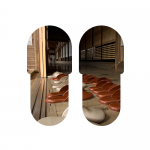With the Rugby World Cup and the Tokyo 2020 Olympics on the horizon, there’s never been a better time to travel to Japan! So in true Access-fashion, we’ve gathered some essential cultural do’s and don’ts and answered those burning questions to help you avoid looking like a typical tourist!
Japan is a very welcoming country but it’s unique culture can be problematic for a first-time visitor! So to help you create a faux-pas-free journey, we’ve got a handful of etiquette tips collated just for you! So that when you head to Japan, you’ll be armed and ready to absorb yourself in it’s fantastic culture! From when to bow to when to take your shoes off and of course what not to do with your chopsticks….
Meet and Greet

Bowing
Bowing is a very important part of Japanese culture so it’s best to mirror the locals. Whilst it’s common in British culture, shaking hands is not a widespread thing in Japan, so don’t offer your hand unless your host does first. So when is it most appropriate to bow? As a main rule bow when:
• Meeting and greeting people
• Thanking someone
• Saying sorry to someone
Business Cards
If you’re visiting Japan on business, remember those all important business cards! Japanese business cards are a big deal, so don’t go handing over a frayed and butt-warmed card out of your wallet! They are actually thought of as an extension of the person so this is an important meeting!
• Always use two hands to accept the card and bow a little when presenting or accepting it.
• Study it thoughtfully.
• Leave it out on the table in front of you or hold onto it until after your meeting.
Footwear
Shoes
Before entering a private home, traditional accommodation or any area with tatami matting, you will need to remove your shoes. Since you’ll be doing this a lot in Japan, we recommend travelling with shoes that slip on and off easily! Because of this, it’s also a good idea to make sure your socks match (and don’t have any holes in them)!
The best policy is to be observant and simply follow the locals – do as they do!
 Slippers
Slippers
For office buildings and restaurants, you can leave your shoes on unless it is clear that slippers are preferred and provided. In this case, there will often be a lower area of tiled floor, with a row of slippers just outside of it. Your outdoor shoes stay on the lower level, then you step up into the slippers.
In some places, the use of slippers also extends to the bathrooms in your hotel and some restaurants. There are usually slippers set out to wear specifically inside the bathroom.
Food and Drink
 Chopsticks
Chopsticks
Knowing how to use chopsticks is essential for Japanese dining etiquette, particularly at formal occasions and when doing business in Japan. There’s so many in’s and out’s of how to use chopsticks that we could’ve written a whole other blog post but to quickly sum things up:
• Never point your chopsticks at another person, wave them in the air or use them as a sword to spear your food (you’re not a gladiator)!
• Don’t stick your chopsticks upright in your rice bowl, this is a funeral rite so if you do this it will be seen as disrespectful and taboo.
• When serving yourself from a communal dish, use the opposite end of your chopsticks (not the end you put in your mouth!) to serve yourself.
• Never rub your chopsticks together. Rubbing them together implies to the restaurant or host that you believe their chopsticks aren’t up to scratch.
 Drink Up
Drink Up
When pouring glasses from a shared bottle (usually Sake), it’s customary to pour drinks for others and allow someone else to pour yours. Don’t forget to say ‘kanpai!’ for ‘Cheers!’ before drinking it down!
 Slurping…
Slurping…
When eating noodles in Japan, the standard practice is to slurp them (yes…you’re going against everything you’ve been taught)! In fact, the louder you slurp the better! It’s considered a compliment to the chef…so slurp away until your heart’s content!
Don’t worry if you can’t remember all of these tips – Japanese people are extremely understanding!
If you still need to get your travel and accommodation sorted for the Rugby World Cup and of course the Tokyo 2020 Olympics, get in touch!





